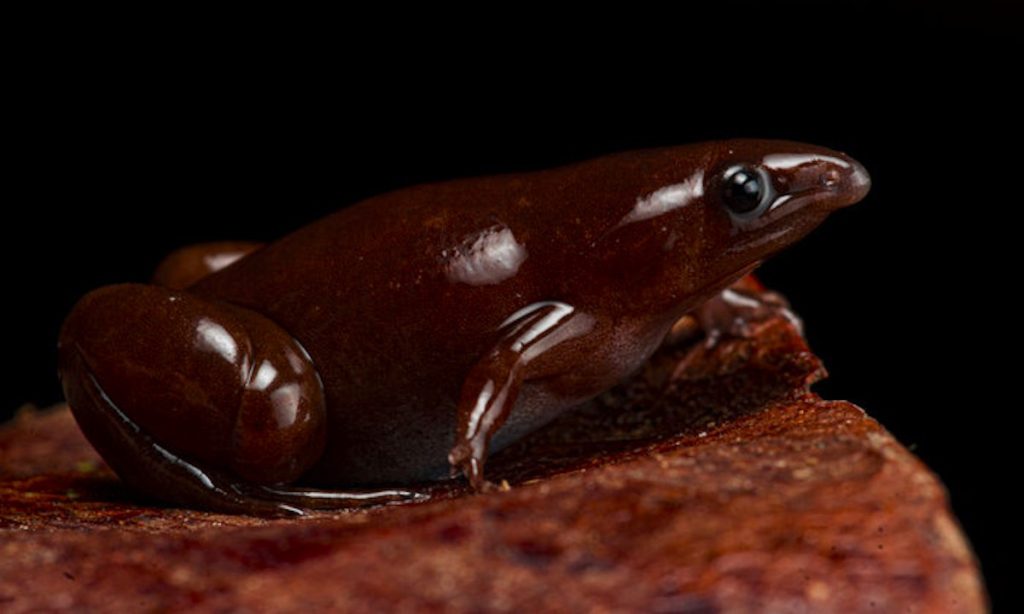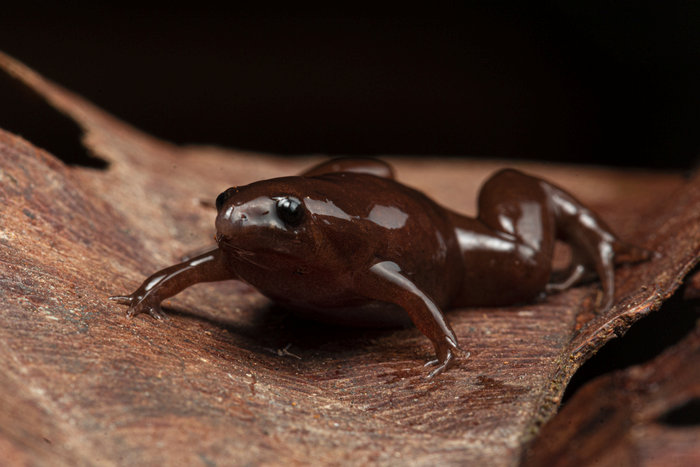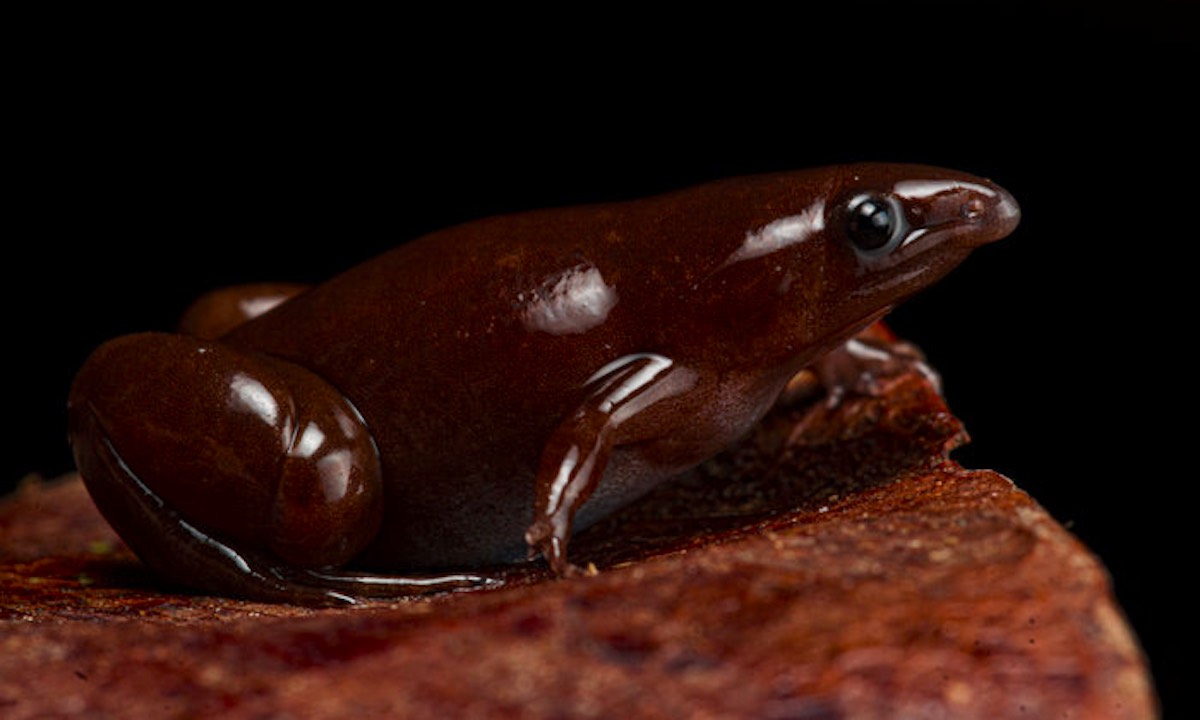
A tiny new species of burrowing frog has been discovered after scientists were able to find it by its unique “beep” sound.
Identified by biologists in the Amazon, it has a pointy tapir-like nose and is less than an inch (1-2 cm) in size.
Researchers have called the dark brown new species Synapturanus danta—with danta being the Spanish for tapir—a mammal with pig-like features and an elephant-style trunk.
While locals in Peru have known about the tiny, burrowing frog due to its ‘beep-beep-beep’ sound it makes underground, the frog has remained elusive to biologists.
Local guides took researchers to peatland areas—wetlands carpeted with nutrient-rich turf made of decaying plant matter—and they searched at night when frogs are most active.
After three nights of searching, waiting for an adult to come out of the dirt, the scientists decided to dig in the peatland area expected to be teeming with the frogs they wanted to find.
After around 20 minutes of digging with their hands, the tiny brown frog was discovered and they were able to give it an official scientific name and description.

A healthy ecosystem
Researchers now say after analysis that the frogs’ presence could indicate healthy peatlands in Peru’s Putumayo Basin, where there is very little deforestation.
Dr Michelle Thompson, a researcher and ecologist at the Field Museum of Nature History, said, “These frogs are really hard to find, and that leads to them being understudied.
CHECK OUT: How You Can Help Protect Endangered Frogs
“It’s an example of the Amazon’s hidden diversity, and it’s important to document it to understand how important the ecosystem functions.
“It looks like a caricature of a tapir, because it has a big blobby body with this tiny little pointy head.”
“The frogs are tiny, about the size of a quarter, they’re brown, they’re underground, and they’re quick.
“You know these little frogs are somewhere underground, but you just don’t see them hopping around.
“We could hear them underground, going beep-beep-beep, and we’d stop, turn off our lights, and dig around, and then listen for it again.
“After a few hours, one hopped out of his little burrow, and we were screaming, ‘Somebody grab it.’”
Dr Germán Chávez, a researcher at Peru’s Institute of Herpetology, said, “Frogs of this genus are spread throughout the Amazon, but since they live underground and can’t get very far by digging, the ranges each species is distributed in are fairly small.
“Since we found this new species in Amazon peatland, it wouldn’t be strange for it to be restricted to this environment.
“Its body shape and general look seems to be adapted to the soft soil of the peatland, rather than the robust and wider shape of species in other environments.
“Our genetic analyses show this new species belongs to a group that evolved in the western Amazon, where the influence of prehistoric landscapes like the Pebas Lake might have created different wetlands, which originated the diversity we see in Synapturanus today.
“Beside the important role of this new species in the food chain of its habitat, we believe that it could be an indicator of healthy peatlands.
“First, we have to confirm whether it’s restricted to this habitat, but its body adaptations seem to point in that direction.
“For instance, if the habitat is too dry, the soil would become too hard for a non-robust frog like this one to dig.
“This would leave our frog with far fewer chances to find a shelter and eventually, it would be hunted by a bigger predator.
“So I think the possibilities that this frog would be a wetlands specialist are high, but still need to go further in this research to confirm it.”
The study was published in Evolutionary Systematics.
HOP the Good News Over to Pals by Sharing This Story on Social Media…




















